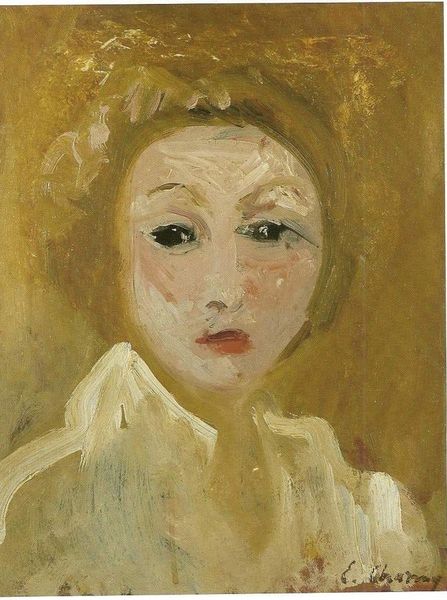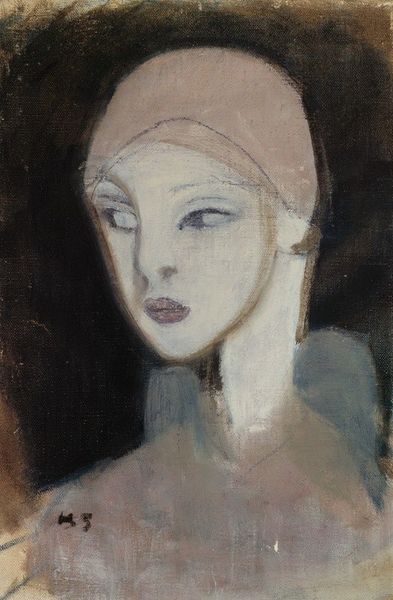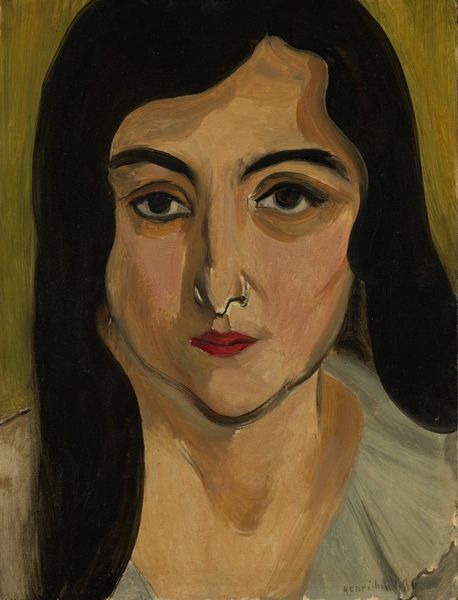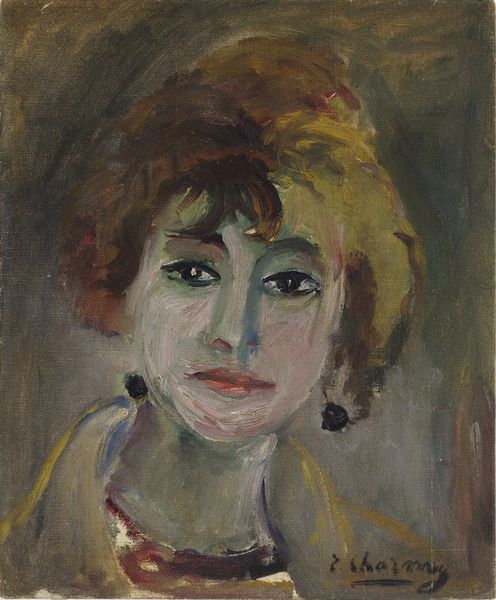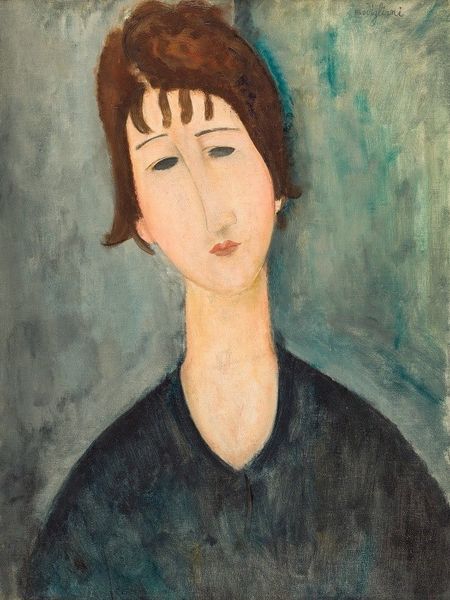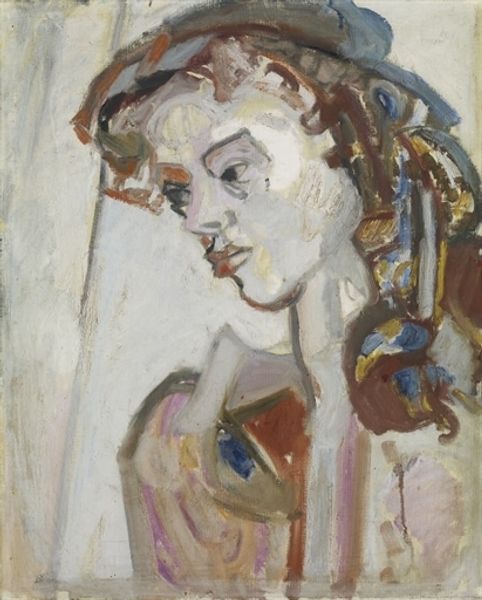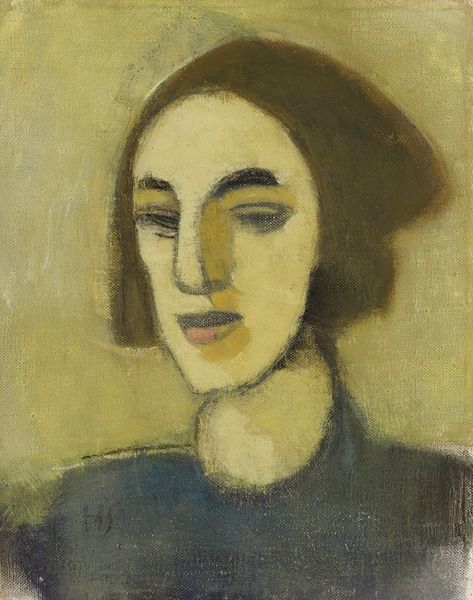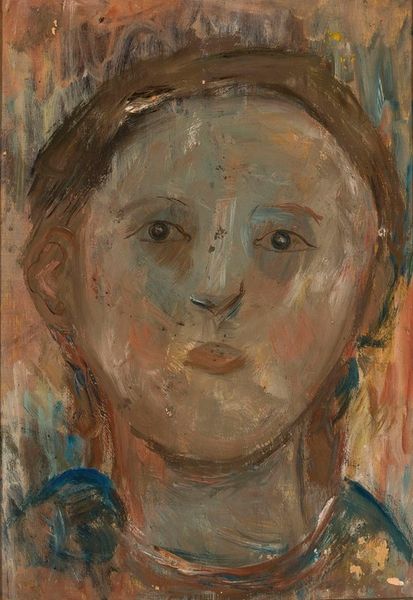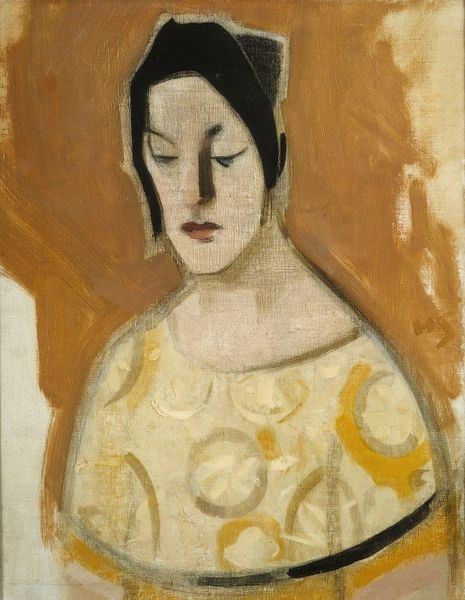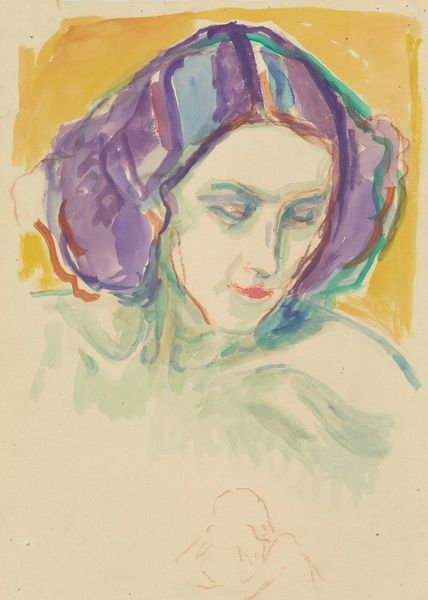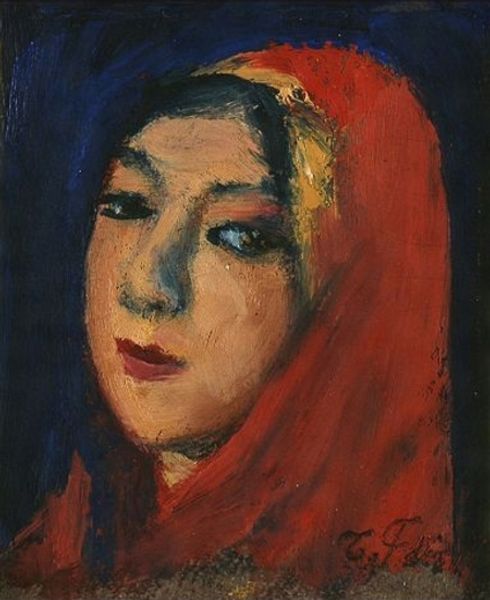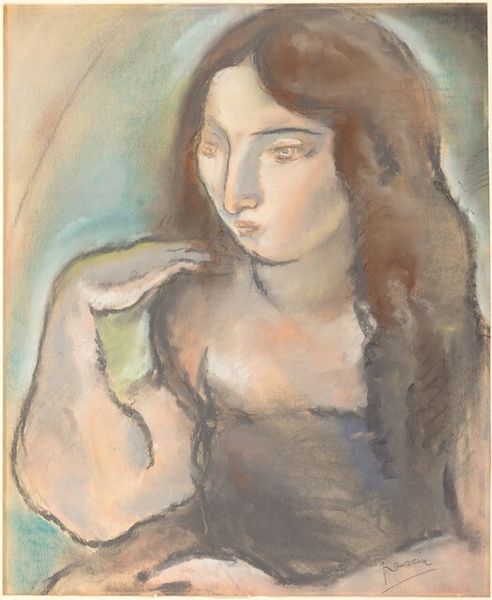
painting, oil-paint
#
portrait
#
figurative
#
painting
#
oil-paint
#
oil painting
#
expressionism
#
portrait art
Copyright: Public Domain: Artvee
Curator: Here we have Edvard Munch's "Portrait of Model," an oil painting created between 1922 and 1923. Editor: It’s immediately striking – not necessarily for its beauty, but for this very specific atmosphere of unease. There's something subtly off about the proportions and the colors that creates this effect. Curator: The deliberate disharmony contributes much to the mood. Munch uses these vibrant yet somewhat clashing colors – the almost sickly green around the mouth, the streaks of red near the eyes – which challenge conventional portraiture and force us to consider more psychological depths. Editor: Right. Notice also the brushstrokes. They aren't blended to create a smooth surface. Instead, they're very visible, directional, almost frantic, giving the portrait a raw, unfinished quality, highlighting the subjective emotional state rather than photographic likeness. The structural asymmetry makes me question reality. Curator: Munch often aimed to portray inner turmoil and complex emotions. He may be delving into themes of alienation or even the fragmentation of self, as common to that historical time as Freud was revealing unseen portions of the mind. Editor: Do you mean she represents inner anxieties? That blue in the upper background seems so heavy, it creates the impression of suffocating. It also makes the work a symbolic presentation of psychological realities rather than a purely aesthetic depiction. Curator: Quite, the blue is symbolic and reinforces this almost dreamlike representation of self, something raw from deep in the sitter. The bold colors symbolize a turbulent inner world and it represents a psychological vulnerability. Editor: Exactly. When looking deeply at this composition, the clashing brushstrokes contribute to this sense of disturbance, evoking complex emotions regarding identity and perhaps questioning the essence of representation in art itself. Curator: It all points toward the artist's desire to depict emotion over simple form. The model is elevated to reveal the human soul and its complex symbolism through emotive forms, it does achieve his goal! Editor: Indeed, it’s unsettling, and memorable precisely because it deviates from classical conventions, inviting viewers to confront profound existential questions within the frame.
Comments
No comments
Be the first to comment and join the conversation on the ultimate creative platform.

